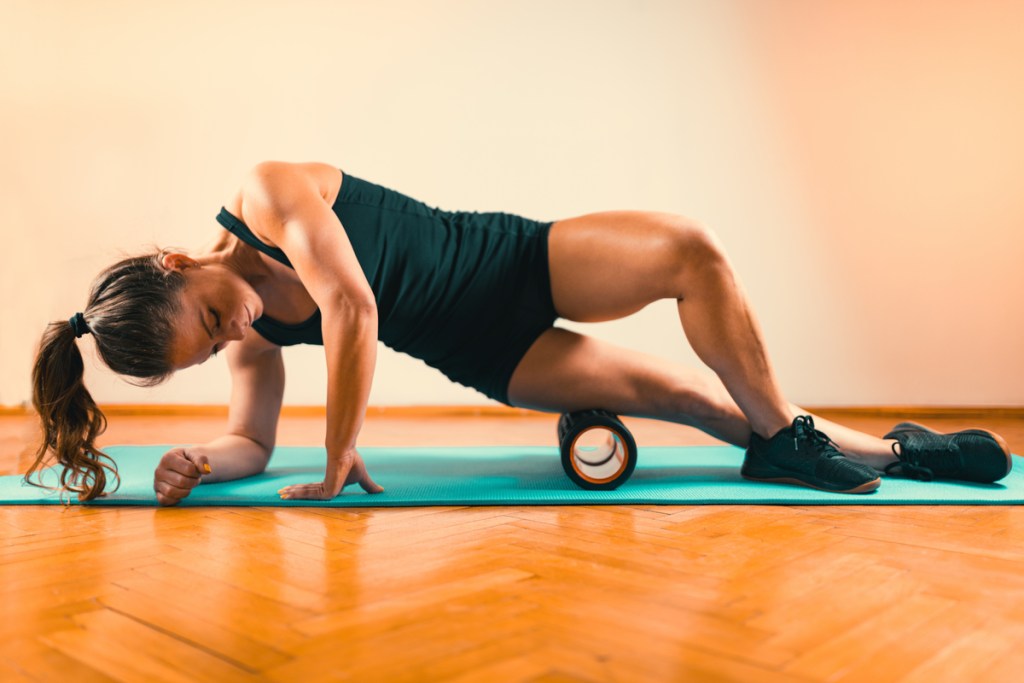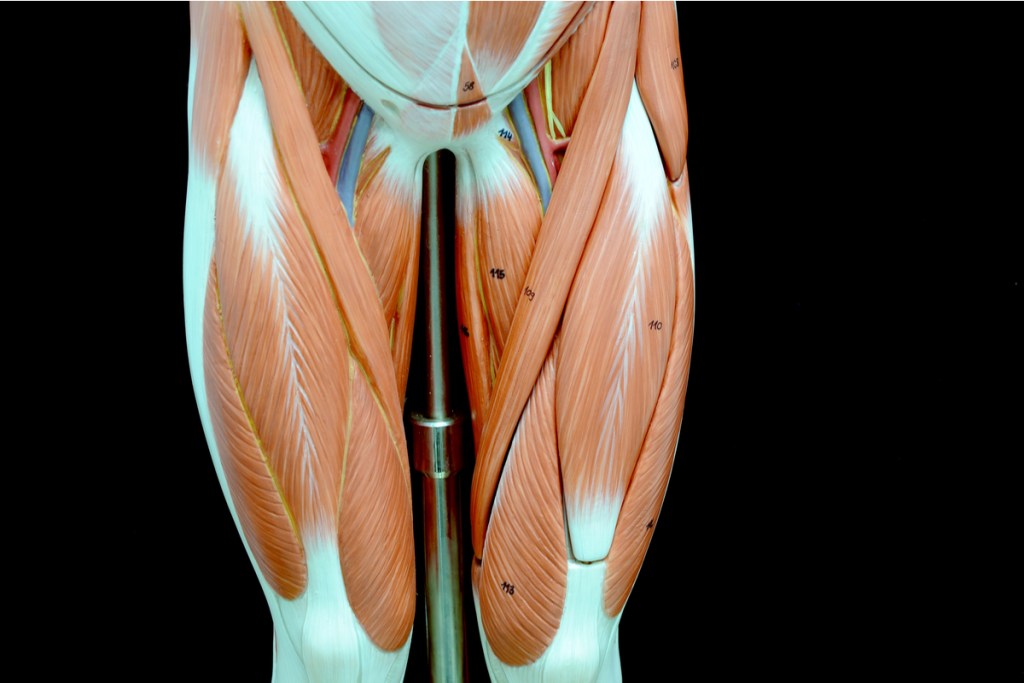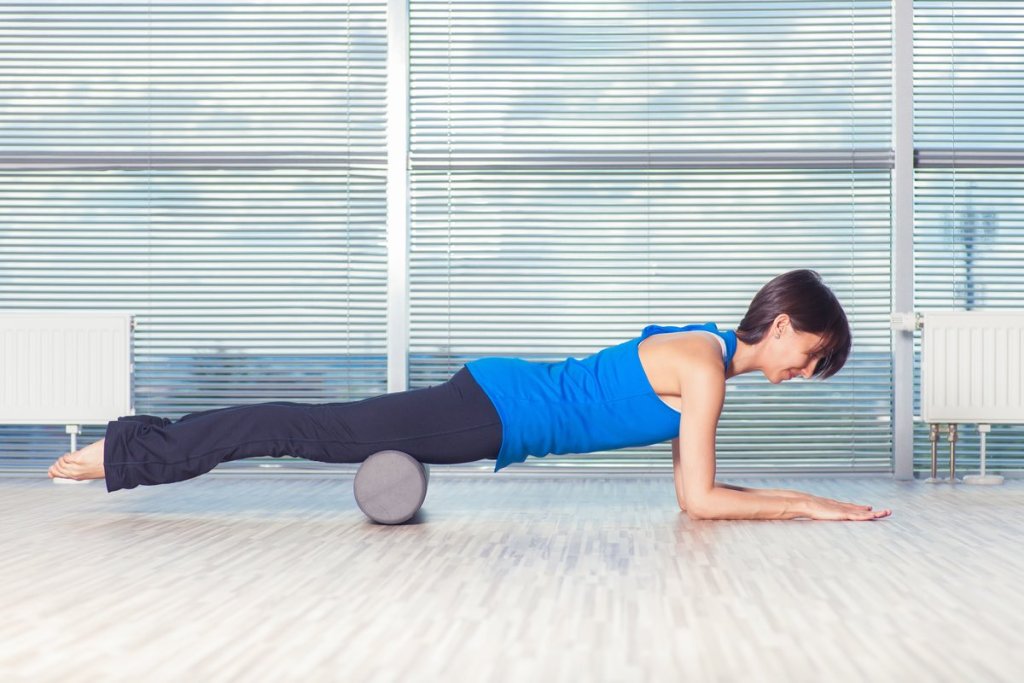
You may not have heard of the sartorius muscle, but it plays a large role — quite literally — in your body’s function and performance.
That’s because it’s the longest muscle in the body, helping to control and facilitate movement from your hips to your knees.
The sartorius muscle also can become painful or inflamed, leaving people looking for relief. One of those ways is a foam roller, a cylindrical tool that literally rolls along a problem area of the body to lengthen muscles, improve flexibility, and reduce pain or irritation.
Before you go out and buy a foam roller for your sore sartorius, here are a few things to know.

What is the sartorius muscle?
The sartorius muscle is a long, thin, rope-like that runs across the thigh, from the hip to the knee. That’s a lot of ground to cover, so it may not come as a surprise to learn that the sartorius is the longest muscle in the body.
The sartorius helps with movement in both the hip and knee and is part of the so-called femoral triangle, which controls movement and contains important anatomical elements such as the femoral artery, which supplies blood to the legs and is one of the body’s largest blood vessels.
How do you know if the sartorius muscle is to blame for pain or tightness? It can often cause burning or sharp pain in the thigh or the front portion of the hip, or pain or inflammation in the back of the knee.
Fortunately, a simple massage, including with a massage tool like a foam roller, can often help straighten things out.
How does a foam roller help with muscle pain?
Both experts and scientific studies support the use of foam rollers for their range of benefits to the body’s soft tissues. Massage therapists, physical therapists, and plenty of other “bodywork” professionals swear by the foam roller’s ability to make a difference for achy patients.
Before a workout, foam rollers can help with warmup by increasing circulation and loosening tight muscles. After a workout, rollers can reduce muscular tension and lower levels of cortisol, a stress hormone that can contribute to weight gain when produced in larger amounts.
A 2019 analysis of 21 different studies concluded that foam rolling “seems to be an effective strategy for short-term improvements in flexibility without decreasing muscle performance.” Although more study is needed and other areas of the analysis were inconclusive, there is enough evidence to suggest that foam rolling is a safe and useful tool to help novice and serious athletes alike.

How should I use the foam roller to stretch the sartorius muscle?
How you use the foam roller will depend on where on your body you are feeling pain or tightness in your sartorius muscle. With that said, here’s a general guide for how to soothe and straighten out your sore sartorius.
- Lie face down and place the foam roller under your thigh
- Prop yourself up on your elbows
- On your upper leg, use the roller to apply pressure to the outer thigh
- On the lower part of the thing, focus on the front thigh.
- Roll with short, slow movements over your thigh
- Pay extra attention to painful areas
- If your leg is too painful for rolling, simply lie on the roller and allow the pressure to gently relieve the tension
A stretched-out sartorius muscle is a happy sartorius muscle, so make sure you’re taking good care of yours. A foam roller is an effective and relatively inexpensive way to make sure your sartorius is in tip-top shape.
Questions? It’s always a good idea to talk to your health care to discuss this or any other new treatment regimen. Take extra care if you’ve had chronic problems with your legs in general or sartorius muscle in particular, if you have a relevant medical condition, or if a foam roller hasn’t worked for you in the past.
In most cases, however, the foam roller should be a great option to keep your sartorius working properly and feeling good.
BlissMark provides information regarding health, wellness, and beauty. The information within this article is not intended to be medical advice. Before starting any diet or exercise routine, consult your physician. If you don’t have a primary care physician, the United States Health & Human Services department has a free online tool that can help you locate a clinic in your area. We are not medical professionals, have not verified or vetted any programs, and in no way intend our content to be anything more than informative and inspiring.



